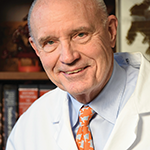About 40% of applicants gain acceptance to American medical schools. For those who are denied, other options include a few select schools in Europe and Asia and a host of Caribbean-based medical schools that cater to North American applicants.
Generally speaking, most students who enter medical school graduate and go on to residency training. Occasionally, a student has second thoughts about their decision, usually toward the end of their first year. In earlier times, when anatomy and body dissection were prominent requirements, some students realized they did not have the heart or stomach to continue and dropped out. Among the most prominent was the billionaire investor and medical benefactor, Carl Icahn, whose name now adorns the Mount Sinai School of Medicine in New York. His disdain for anatomy convinced him to forsake the formaldehyde fumes of the New York University anatomy labs and head off to the antiseptic world of finance.5
Nowadays, other enticements may lure students away from medical school or residency training. This is especially critical in the San Francisco Bay area, where students are exposed to a tantalizing array of tech opportunities. How discouraging that students are abandoning the rich clinical experience that postgraduate training offers. After working so hard to get to this point, why do some students pack up and leave?
“I loved working with patients, but I looked around me and realized that I didn’t want the jobs of anybody who had ‘succeeded’ as a clinician,” recalled one graduate who chose a career advising health-tech startups.6 Really?
The New New Curriculum
Gone are the days when seemingly endless blocks of anatomy, histology, biochemistry or physiology competed for space in the grey matter of the freshman class. Nowadays, it is de rigueur for virtually all medical schools to begin clinical rotations at the start of freshman year. The trend gained considerable traction in the past decade, after some of the newly opened American medical schools began implementing this approach as a way to entice potential applicants. Days following the traditional white coat ceremony welcoming students to medicine, they are assigned to wards and clinics where they put their newly purchased stethoscopes, ophthalmoscopes and reflex hammers to good use.
I first heard about this novel approach during a lecture given by the dean in charge of curriculum design at the recently established Hofstra North Shore-Long Island Jewish School of Medicine at Hofstra University in Hempstead, N.Y. He described the excitement and enthusiasm of one student who had been assigned to ride in an ambulance on her first day of school.



